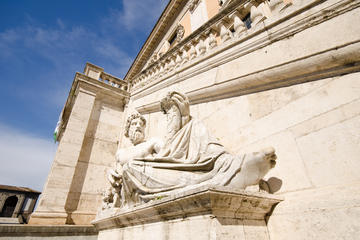Seven Hills of Rome Tours
TIME : 2016/2/22 11:42:49

Seven Hills of Rome Tours
Before the Roman Empire rose to power, before a city called Rome even existed, the area had already been occupied for many years. The marshy valleys and steep hills offered natural protection, and while it is thought that individual communities developed on the different hills in the area, they eventually grew together as population increased.
In the 4th century B.C., what are known as the seven hills were joined together by the Servian walls—the ancient walls of Rome—and while modern Rome has far outgrown its original limits, the area around these seven hills still forms the geographical heart of the city.
According to the legend, the central hill of Palatine was where Rome was founded by Romulus on the site of older settlements. Today, the whole ridge is an archaeological site that houses the residence of Augustus, the Temple of Apollo and the Great Mother. The biggest of the seven hills is Esquiline Hill. While it was once used as a burial ground for the poor, Augustus, the first Roman emperor, turned the space into a park. Esquiline Hill eventually acquired some fame under the rule of Emperor Nero, who built the extravagant Domus Aurea—the golden house—upon it.
The other hills include Aventine, known for its many temples to different deities and home to ancient Rome’s lower class; Capitoline, which now houses Rome’s city hall; and Caelian, a fashionable district where Rome’s wealthy lived in their extravagant villas. Quirinal and Viminal, two of the smallest hills, include more monuments and parks, but Quirinal is best known as the location of the Palazzo del Quirinale, the official residence of the Italian Head of State. Practical Info
The Seven Hills of Rome can be found east of the river Tiber, within the walls of the ancient city. While the hills were distinguishable in ancient times and although they still form the geographical heart of Rome, in today's jumble of buildings and through various landscaping projects, only the slight rise and fall of the ground gives clues about the underlying topography.
